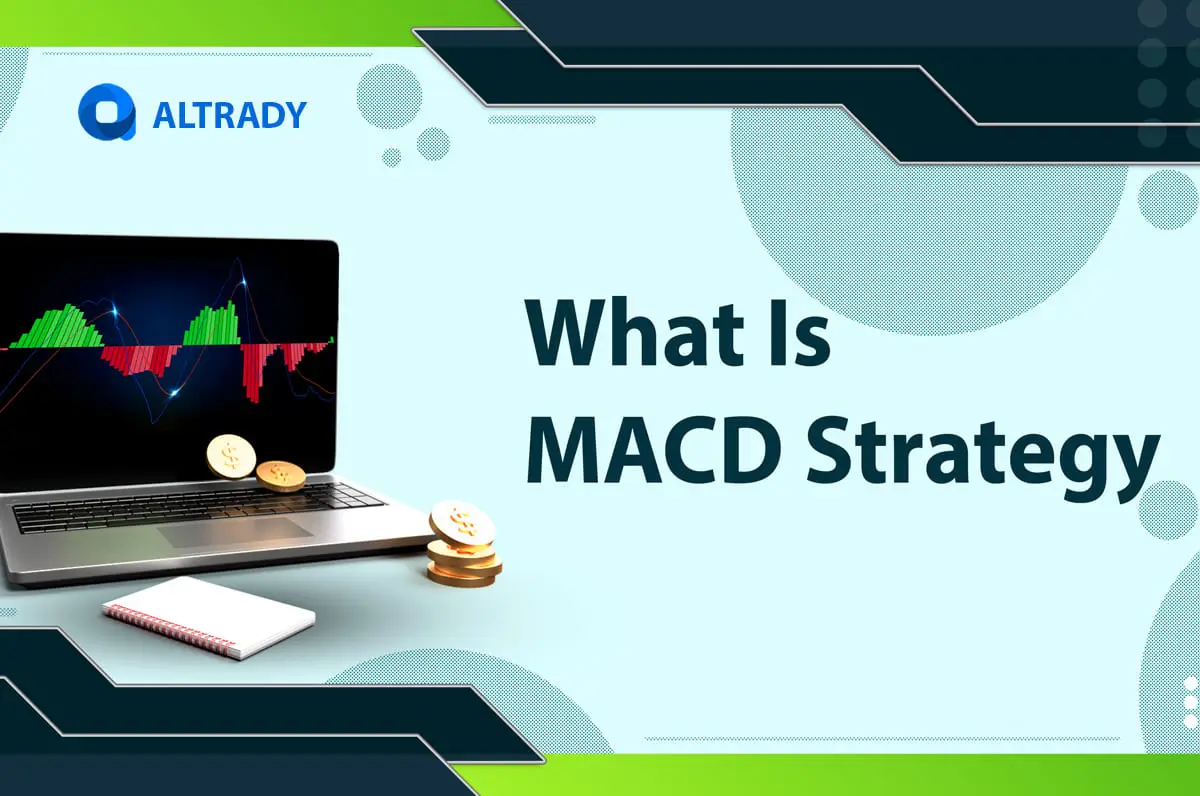Black Friday is loading…
Get 40% off with Altrady’s yearly plan and take the lead.
.svg)
.svg)
.svg)
.svg)
.svg)
.svg)
.svg)
.svg)
.svg)
.svg)
.svg)
.svg)
.svg)

The Moving Average Convergence Divergence indicator tool has settled its place in the ever-evolving space of crypto trading as a primary option guiding the decisions of advanced and beginner traders.
This indicator tool stands out for its potential to identify trends, reversal momentums, and market conditions shifts. MACD shows an intuitive interface of analysis charged by a histogram, allowing the study of complex conditions from an understandable starting point.
In this guide, we will explore the core aspects of MACD and how to craft a trading strategy that helps to identify trends and market momentum.

The MACD is a momentum oscillator that analyzes in-depth correlations between price movement and its moving average, featuring the composition of three inside indicators assessing various market conditions.
These inside indicators respond to the name of the MACD Line, Signal Line, working on top of a histogram. Let's explore those terms.
MACD Line
Subtracting the 12-period from the 26-period Exponential Moving Average (EMA), this line follows the short-term direction of a trending market relative to the long-term trend.
Signal Line
Composed by the 9-period EMA, this line acts as a confirmation signal for entry and exit points during trend changes.
Histogram
Visually represents the difference between the MACD Line and the Signal Line through a bar chart emphasizing the divergence between the two lines.

Traders use the MACD to spot crossovers and divergences, employing histogram analysis to confirm the signals and set up trade entries. The indicator ranges from top to bottom, classifying the MACD into positive or negative values.
Positive MACD
The positive value means that the EMA 12-period is above the 26-period, suggesting the market is in an uptrend.
Negative MACD
The negative value means that the EMA 12-period is below the 26-period, suggesting the market is in a downtrend.
Interpretations of MACD for crypto trading
The MACD values allow for multiple interpretations and applications while trading crypto assets. Let's overview the most common.
The MACD offers even deeper insights for seasoned traders who can be exposed to complex scenarios. Let's see some.
The Double-Cross Strategy
The MACD combined with other indicators increases its trustworthiness. One well-known way is combining MACD with The Stochastic Oscillator under the Double-Cross Strategy.
So, how does the MADC work with the Stochastic? Since both tools are momentum oscillators, traders will find conditions of potential convergence that confirm strong price movements.
Even though the MACD could be a more reliable option as a sole tool for trends, Stochastic better identifies overbought and oversold zones. These two characteristics give this strategy a unique power, especially for crypto traders who can't ignore volatility and market jolts.
The key to spotting double-cross signals is to look for:
The best approach for creating a MACD strategy is to focus on the following:
Indicators are not indisputable tools, they carry disadvantages to be aware of to get the most out of them. It is important to understand that they are not prediction tools but indicators that, being treated properly, might help to predict.
It is necessary to be aware of things like imprecision, lagging, and false signals. To overcome this situation, consider:
The Moving Average Convergence Divergence is a powerful tool so far for crypto trading.
As we have seen, its intuitive interface displays three components suitable for understanding price movements, especially in trending markets and for reversal opportunities.
You can use and optimize MACD accordingly and strategically with other tools to gain insights into market conditions and momentum shifts.
Try out Altrady's platform and explore its library of indicators to learn more about technical tools. You can SIGN UP FREE and start paper trading MACD strategies learned through this guide.